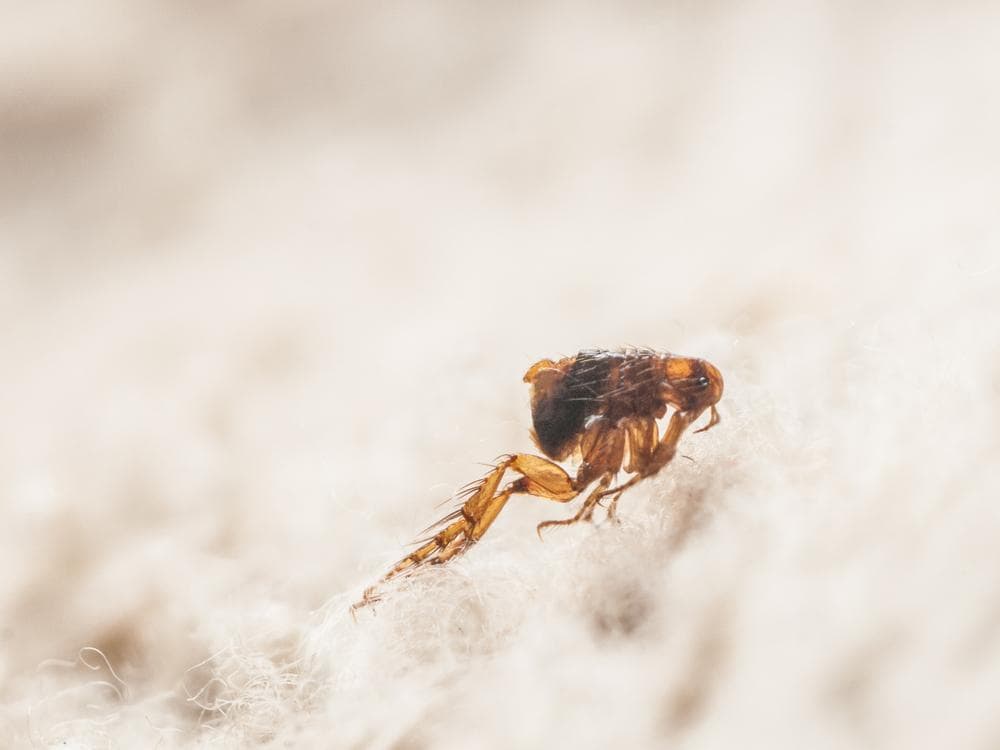
Nematodes, commonly known as roundworms, are a versatile weapon in the battle against fleas. They offer an environmentally friendly, non-chemical solution to pest control that’s safe for humans and pets. In this comprehensive guide, we’ll delve into the process of applying nematodes for flea control, covering everything from preparation to application and tips for success.
To apply nematodes for fleas, purchase beneficial nematodes like Sf, Sc, or Hb. Wait for the right time, usually in the evening, and prepare your soil by watering it. Mix the nematodes with water, usually about 1 teaspoon per gallon, and spray or sprinkle them across your lawn and garden. Keep the soil moist for about 10 days after application and reapply as necessary, usually every seven to 10 days.
What Are Nematodes?
Nematodes are microscopic, worm-like organisms known for their parasitic nature. They are particularly effective against soil-dwelling pests such as fleas. Some nematodes, like Steinernema feltiae (Sf), Steinernemacarpocapsae (Sc), and Heterorhabditis bacteriophora (Hb), are deadly to fleas but harmless to humans and pets.
These nematodes work by seeking out flea larvae and pupae in the soil, infecting them with a special gut bacteria that is fatal to the fleas. They reproduce within the host, leading to a diminished flea population within 24 hours.
Preparing to Apply Nematodes
Before starting, identify the pest you want to eradicate. For fleas, Sf, Sc, and Hb nematodes are the most common types. These beneficial nematodes are available at local nurseries, retail stores, and online platforms like Amazon.
The Step-by-Step Guide to Applying Nematodes
- Wait for the right time: Apply nematodes in the evening to avoid direct sunlight. They are most effective when the soil is between 44°-83°F.
- Aerate and moisten the soil: Water the area you’re going to treat until the soil is damp, but not pooling on the surface.
- Mix the nematodes with water: Use about 1 teaspoon of nematodes per gallon of water, or follow the ratio on the packaging.
- Spray or sprinkle the nematodes across your lawn and garden: Use a watering can or sprayer filled with the mixture of water and nematodes. Shake continually during use to prevent the nematodes from sinking to the bottom.
- Keep the soil moist: Maintain a damp environment for about 10 days after application to help the nematodes establish themselves. Lightly water the treated area every three or four days.
- Reapply as necessary: Apply beneficial nematodes at least one more time after the first application. Wait about seven to 10 days, then apply the nematodes again, the same way you did the first time.
Tips for Success
- Focus application in areas that pets frequent, shaded areas, under porches, and around structures where fleas can hide.
- For heavy infestations, half the coverage area. For example, 5 million nematodes will cover 200 sq. ft; 10 million nematodes will cover 400 sq. ft.
- If the infestation continues, apply beneficial nematodes again every seven to 10 days until the pests disappear.
- Avoid mixing nematodes with pesticides or fertilizers, as they are vulnerable to ultraviolet light and various chemical pesticides.
- Store nematodes in a dark space at 36-45°F for no more than 30 days. Once activated, release within 1 hour.
Conclusion
Beneficial nematodes are a powerful, natural solution for flea control. They are safe for humans and pets, easy to apply, and provide a non-chemical alternative to traditional pest control methods. While they start killing individual pests within 48 hours, it may take about two weeks to see a noticeable decrease in pests. The nematodes need time to consume one host, reproduce, and move on to the next one. By following the steps and tips outlined above, you’ll be on your way to a flea-free space in no time.
Frequently Asked Questions
Can nematodes harm my pets or other beneficial insects in my garden?
No, the nematodes used for pest control are completely safe for pets, humans, and beneficial insects. They specifically target soil-dwelling pests like fleas and do not harm other creatures.
How long does it take for nematodes to start working?
Nematodes start working immediately after application, infecting and killing individual pests within 48 hours. However, it may take about two weeks to see a noticeable decrease in pests.
Can I use nematodes in my indoor plants?
Yes, nematodes can be used both outdoors and indoors. They are effective in any environment where soil-dwelling pests are present.
Do I need to reapply nematodes after rain or watering my garden?
No, once the nematodes are established in the soil, they can withstand normal watering and rain. However, it’s important to keep the soil moist for about 10 days after the initial application to help the nematodes establish themselves.
Can I use nematodes for other pests besides fleas?
Yes, nematodes are effective against a variety of soil-dwelling pests, including grubs, weevils, and other types of beetles. However, different species of nematodes target different pests, so make sure to choose the right type for your specific pest problem.












